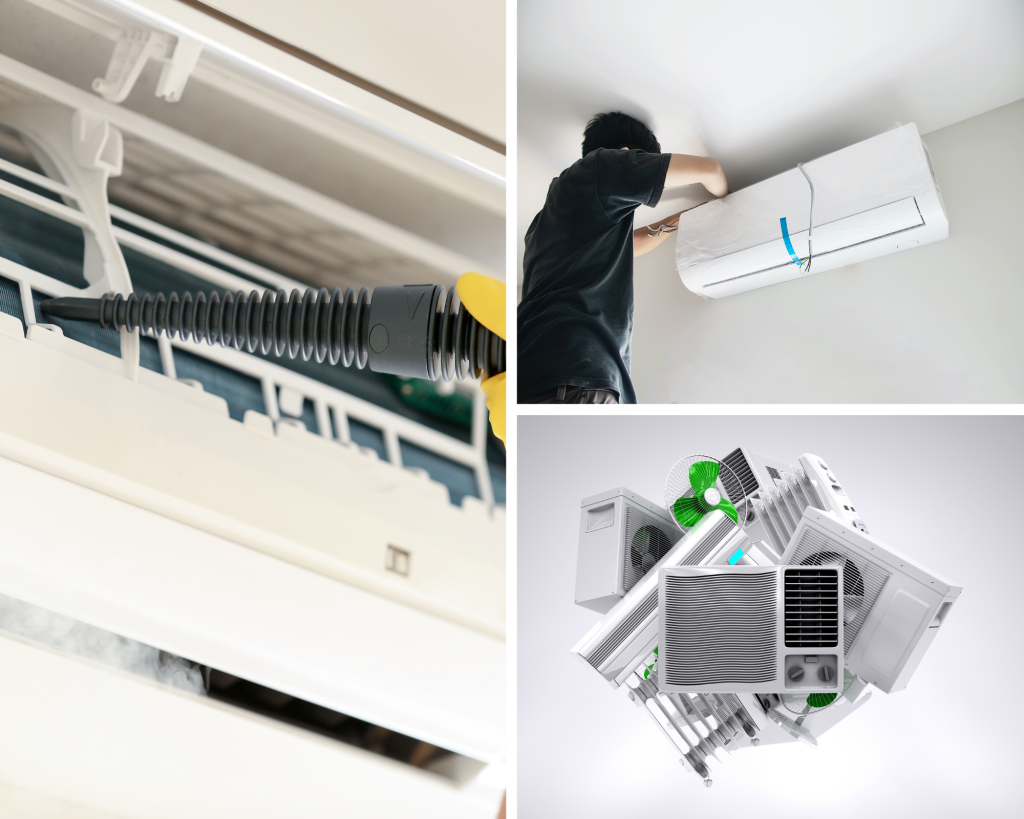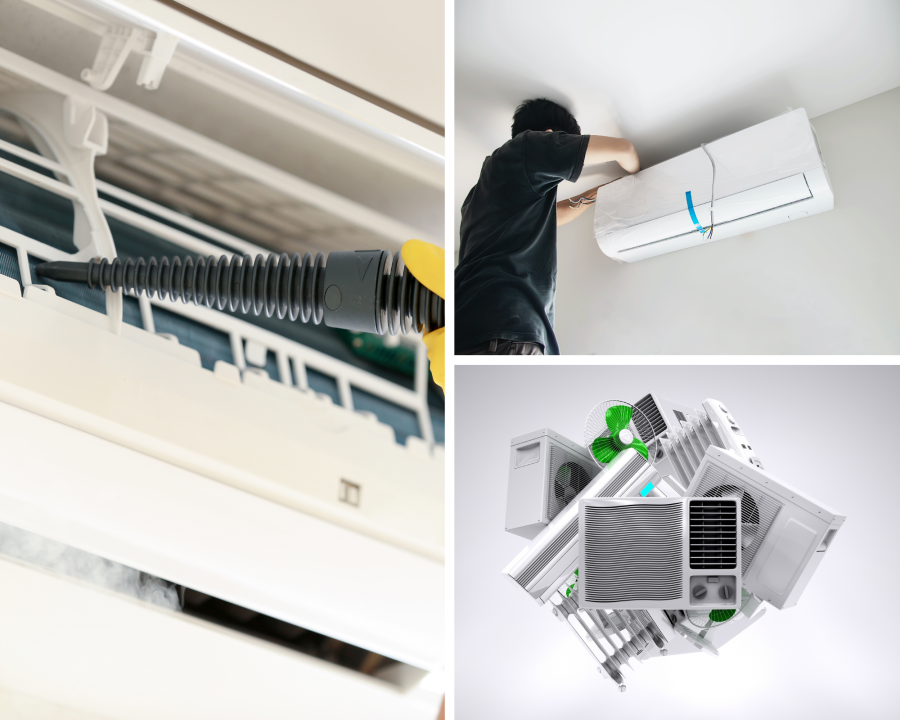Get to grips with BTU in aircon and optimise your cooling efficiency. Our comprehensive guide explores the science, metrics, and benefits of BTU-based aircon.

Demystifying BTU: The Science Behind this Essential Metric in Aircon
Air conditioning equipment’ cooling capacity is measured in British Thermal Units (BTUs). BTUs are the energy needed to chill one pound of water by one degree Fahrenheit. When choosing an aircon unit for your home or office, it’s essential to grasp the science behind this UK unit of measurement.
While choosing an air conditioner, BTU measurement is crucial. Air conditioners’ BTUs determine their cooling capacity. For instance, a larger room needs more BTUs than a smaller one. You must calculate your room’s square footage and BTUs for efficient cooling.
The room you’re cooling also affects BTUs. Kitchens demand more BTUs than bedrooms because of their high-heat appliances. Note that BTUs measure both cooling and heating capacity. Consequently, while buying a heating system, BTUs are crucial.
BTU vs Tons: How to Choose the Right Aircon Unit Based on BTU
BTUs and Tons are used to measure air conditioner cooling capability. Nonetheless, a substantial discrepancy between the two measurements can impair aircon efficiency. So, choosing the proper aircon unit based on BTU is crucial for optimal cooling.
12,000 BTUs per hour equals one ton. Hence, a 1.5 Ton air conditioner can cool 18,000 BTUs each hour. The room’s size, number of occupants, and sunlight exposure should be considered when purchasing an aircon unit. The room’s BTU requirements depend on these parameters.
Air conditioners with too low BTUs are a common mistake. When an aircon unit is too tiny, it overworks and raises energy expenditures. Choosing a team with too many BTUs can save energy and cost extra.
Going Beyond BTU: Other Metrics to Consider When Selecting an Aircon Unit
BTUs are the primary metric used to quantify an aircon unit’s cooling capacity, however other aspects should be considered while choosing one. They include EER, SEER, and performance coefficient (COP). Knowing these characteristics can help you select an efficient and effective aircon equipment.
EER measures air conditioners’ cooling capability per watt. EER indicates energy efficiency. Consequently, choosing an aircon unit with a higher EER will lower your energy bills and carbon impact. SEER is comparable to EER but considers the unit’s performance across a complete cooling season, making it a more accurate efficiency indicator. The greater the SEER, the more expensive the team, but it will save energy in the long term.
The COP compares electrical energy input to heating or cooling output. It’s essential when choosing a heating and cooling system. The device uses less energy and is more efficient with a higher COP. Consequently, selecting an aircon unit with a high COP will conserve energy and provide excellent heating and cooling.
The aircon unit’s refrigerant is another consideration. R-22 and other environmentally damaging refrigerants are being phased out. So, choose an aircon unit that employs ecologically friendly refrigerants like R-410A.
Right-sizing Your Aircon: Determining the Optimal BTU for Your Room
Selecting the proper aircon unit requires determining the room’s ideal BTU. An air conditioner’s cooling capacity is measured in BTUs. Choose an aircon unit with the appropriate BTU for your space to ensure efficient and effective cooling. Selecting an aircon unit with too much or too little BTU might result in inefficient cooling, more extraordinary energy expenses, and a shorter lifespan.
Determining the appropriate BTU for your room depends on its size, number of people, and amount of electronic devices. For proper BTU calculations, all these elements must be considered. Multiplying the room’s square footage by 20 BTUs is a standard way to calculate the ideal BTU. Nevertheless, this strategy does not account for room orientation, insulation, or electrical device heat gain.
The Manual J Load Calculation method helps calculate the optimal BTU. The room’s size, orientation, insulation, and electrical device heat gain are considered in this procedure. The Manual J Load Calculation method provides precise results and helps you choose the proper air conditioner. Employ a professional HVAC contractor to do the Manual J Load Calculation for correct results.
The air filter type is another consideration when choosing an air conditioner. A good air filter improves air quality and aircon unit strain. Consequently, selecting an aircon unit with a high-quality air filter can extend its lifespan and enhance your space’s air quality.
Energy Efficiency and BTU: How to Balance Performance and Cost
Energy efficiency is crucial while choosing an air conditioner. A more energy-efficient aircon unit lowers energy expenses and your carbon footprint. Yet, energy-efficient air conditioners cost more. Hence, performance and cost must be balanced while selecting an air conditioner.
A high SEER air conditioner may balance performance and cost. SEER measures the air conditioner’s efficiency over a cooling season. Consequently, choosing an aircon unit with a high SEER rating provides efficient cooling and lowers energy expenses.
While balancing performance and cost, the aircon unit’s compressor is another aspect. The two-stage and single-stage compressors are standard compressors. The single-stage compressor is cheaper but less energy-efficient. Consequently, choosing an aircon unit with a two-stage compressor can assure efficient cooling and lower energy expenditu
Conclusion
EER, SEER, COP, and refrigerant type must be considered while choosing an air conditioner, along with BTUs. Choosing an aircon unit with high efficiency ratios and ecologically friendly refrigerants helps lower energy expenditures and carbon impact. So, it’s crucial to investigate and select the correct aircon equipment.
Choosing the best air conditioner requires finding the correct BTU for your room and balancing performance and cost. While calculating the appropriate BTU, room size, number of people, and amount of electronic gadgets must be considered. The Manual J Load Calculation method is excellent for calculating the ideal BTU and should be done by a competent HVAC specialist. Selecting an air conditioner with a high SEER rating and a two-stage compressor balances performance and cost.
